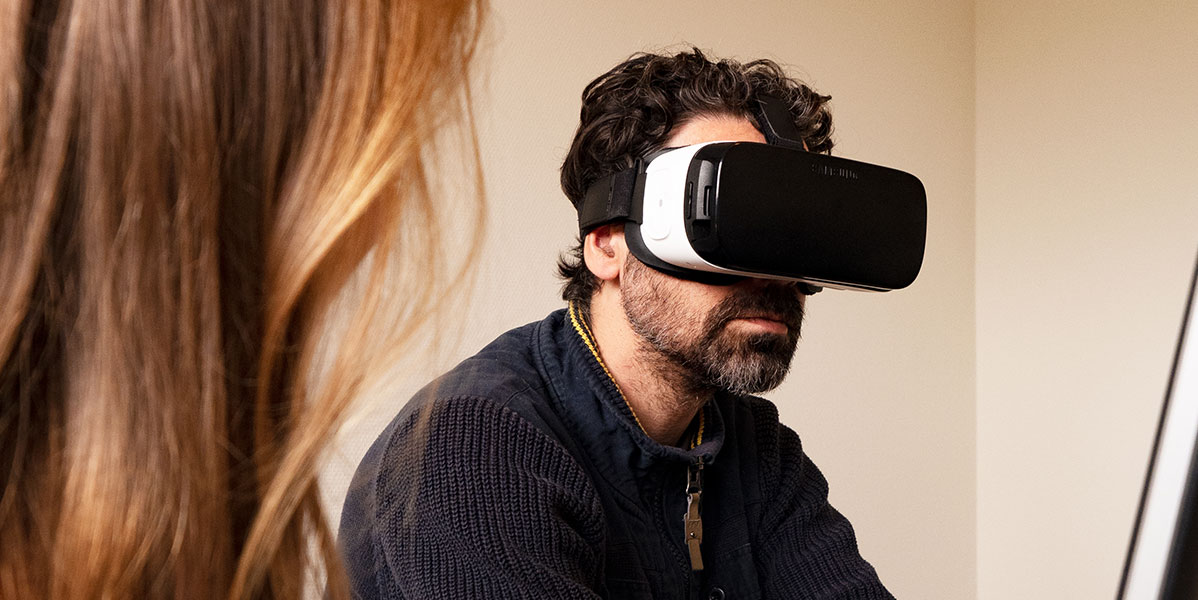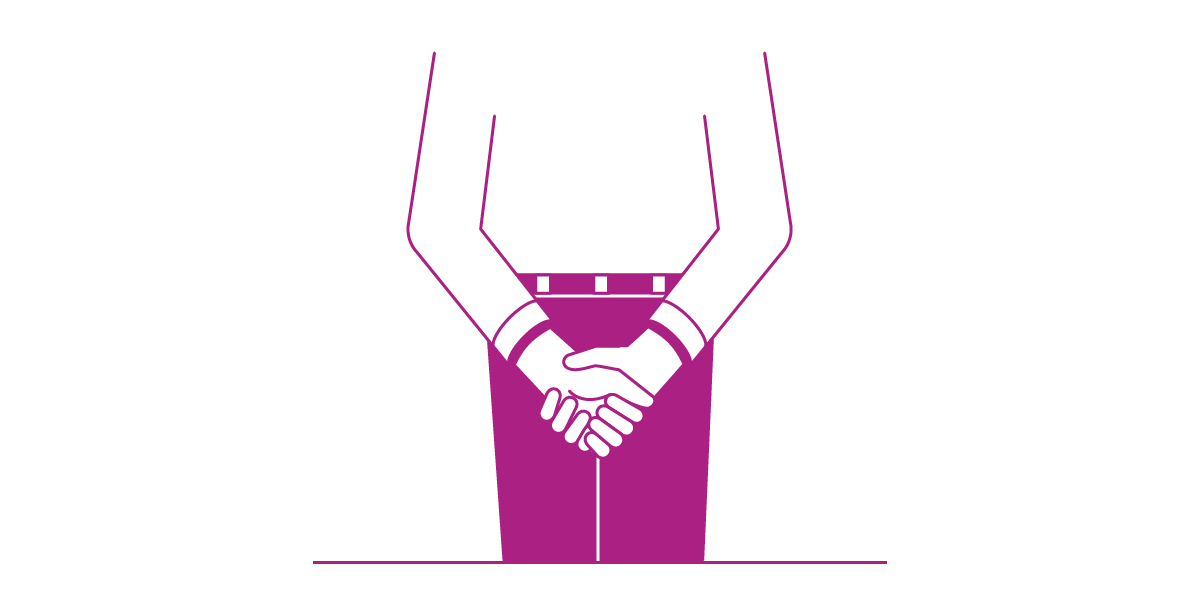Researcher Hanneke Kip has been conducting doctoral research since July 2016 at Transfore and the University of Twente into the possibilities of virtual reality (VR) in forensic mental health services (GGZ).
She is working on several sub-projects around this theme and its corresponding development process. Ms Kip is also investigating the implementation of the Minddistrict platform in forensic care. GGZ Noord-Holland-Noord and GGzE are involved in her research. ‘There can easily be a mismatch between the possibilities offered by the technology and the needs of the practitioner and the client.’
 Hanneke Kip
Hanneke Kip
‘There are clients who live at home and get treated at Transfore. For them there are online modules, courses and project teams.’ Ms Kip tells that some counsellors are really going for these developments, but most are not making use of them. ‘We are trying to find out the reason, from the perspective of the practitioner as well as of the patient and the technology. When do people stop with it, and can we find clues that let us know before it happens?’
Following the personal situation
What do patients and practitioners who work in forensic mental health services want? ‘I see that many clients like actually doing something instead of just talking. “Normal” treatment is perceived as drab and revolves around reflection and thinking. That fits some clients, but others are more practically oriented. Doing something is a better fit for them.’ Some Transfore clients are not allowed to go outside, but could experience it by using VR. ‘This technology can also help bridge the gap between sitting indoors all the time and going outside all of a sudden. That makes a major difference for clients, and it can be practiced better with VR.’
‘There can easily be a mismatch between the possibilities offered by the technology and the needs of the practitioner and the client.’
Ms Kip looks at the reasons people have for not using the new treatments. Counsellors mention that patients cannot always participate because they don’t have a computer. Sometimes there is no motivation to do the treatment. ‘This information does offer possibilities. Sometimes clients are too busy with extraneous matters, they are disorganised, or just forget that something is waiting for them online.’
 A picture of Hanneke exposing a test subject to an intervention via virtual reality
A picture of Hanneke exposing a test subject to an intervention via virtual reality
The research does not focus on the intervention but on the method. ‘These days practitioners tend to think, “VR is nice, we should get that too”. But there can easily be a mismatch between the possibilities offered by the technology and the needs of the practitioner and the client.’ Ms Kip says that it has also been difficult to apply technology to the protocol. ‘At first it is a question of coordinating needs, and looking to connect to the vision of the institution. That is how it can be of added value.’
Personalisation is the next step
Hanneke tells that at present there are many applications therapists themselves can deploy. ‘We should therefore look more into how technology can be adapted to the environment. We have not paid enough attention to that yet. There are many possibilities and one can always do better. The next step is to personalise it, to customise it. This is a large group, so that isn’t always easy. You cannot say: this will make you angry, so let’s play it out.’
‘It changes your role as counsellor, you have to approach the work differently and deal with it differently.’
The researcher emphasises that there are also pitfalls. ‘If you do not implement it well, it won’t work. Everyone gets excited at first but then it turns out not to fit well and everyone is disappointed. ’ So one has to really think of how to embed and implement the technology successfully. ’ The question, then, is: how do you give therapists tools to work with the technology? ‘It changes your role as counsellor, you have to approach the work differently and deal with it differently.’

The interviews that Ms Kip did for her research using the Minddistrict platform also showed that practitioners still struggle mainly with the question of deciding who to use ehealth on. ‘They ask themselves what to do when someone’s motivation wanes, or how to improve discussion of the assignments. There is a better way to use and convey that information.’
Wide range to choose from
Hanneke has a picture of what ehealth should look like in the future. ‘I have the ideal situation as well as a realistic picture in my mind. I would like to be able to determine every client’s needs as well as what the therapist is comfortable with. There must be a wide range to choose from.’ And the process should be evaluated regularly. ‘The treatment must also fit with the counsellor; no one should be forced to work with ehealth.’
‘Everyone starts with something new, so that costs time – yet can also save time.’
Ms Kip also envisions different types of technology. ‘For example, if you have a patient with aggression regulation problems, then you give a watch and an app to measure that. Then you can quickly see whether treatment works.’ Hanneke also observes that these days, only a single tool tends to be deployed, and that’s it. Ideally a practitioner can choose from a number of options, from the Minddistrict platform to a smartwatch, VR or an app. That also requires a different way to evaluate, as well as specific skills. ‘Everyone starts with something new, so that costs time – yet can also save time.’
Ms Kip knows that not everyone likes the idea of a digital revolution in forensic care, but most people are enthusiastic about it. ‘Most of the clients do it a few times and then forget it. But that isn’t just because of a lack of willingness or skills, they just don’t think about it. She emphasises that organisations would be smart to keep this in mind. ‘Everyone benefits from a better picture of how it works, what it exactly means, and what we should expect from each other.’
Are you curious about Minddistrict?
To find out more about the platform or for a demonstration, get in touch.
